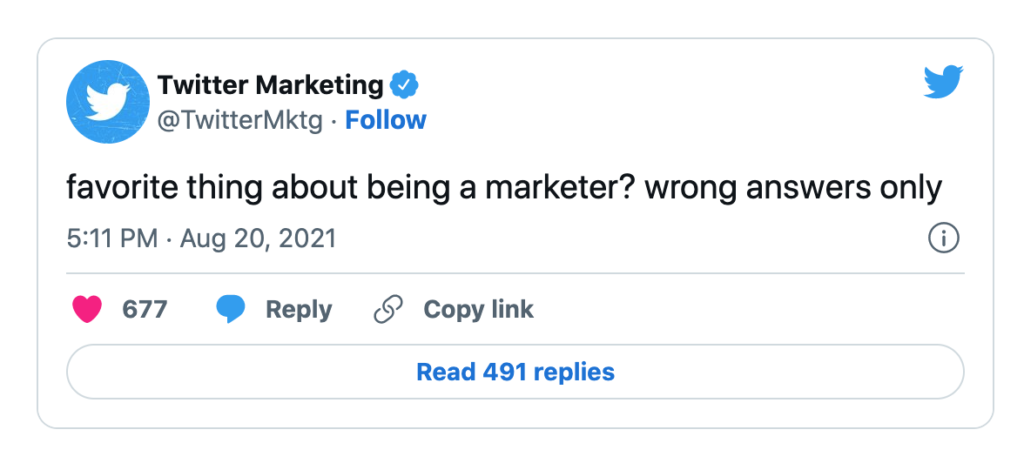While thinking about social media marketing B2B might not be the first thing that pops into your mind, rest assured that going digital is exactly the future (and the present!) of B2B marketing. Social media marketing for B2B truly is an excellent way to build your brand and find an audience. So, in this article, we’ll be talking about how you can tweak your B2B social media marketing to work more effectively, look deeper into social selling, and more – in short, all the key components of successful B2B social media marketing.
But, first things first:
What Is B2B Social Media Marketing?
B2B here is a codename for business-to-business, and same as your regular business-to-customer marketing, B2B social media marketing also employs social channels to market their products or services. In this case, though, the promotions are meant for business clients and prospects instead of regular customers. However, aiming your promotions at business owners and decision-makers requires a bit more strategic thinking and a different approach, one that nurtures relationships that could lead to large purchase agreements.
All social media platforms have a slot for B2B marketing; however, the content will look different for a B2B-oriented campaign than for a consumer-focused one.
But, before we begin strategizing and planning, you might want to take a look at these numbers telling us why and how B2B marketers use social media accounts:
- As per The CMO Survey, it is forecasted that B2B product brands will spend around 14.7% of their marketing budget on social media;
- While B2B service brands are likely to top that with 18,3%;
- You might also be interested in learning that 22,7% of internet users use the internet for business-related searches;
- And 96% of B2B content marketers use LinkedIn for content marketing, with TikTok taking the second place at around 82%;
- B2B clients spend around 27% of their purchase consideration time searching for relevant info online. In fact, 44% of millennials prefer never to talk to a sales representative and rather do all their bidding online;
- The use of social media ads and promotions in B2B marketing is growing incredibly fast. A couple of years ago, the usage was around 60%, and last year, it shot up to 83%;
- It is forecasted that a whopping 80% of B2B sales interaction will be done on digital channels come 2025;
- And here’s another forecast – US B2B businesses will spend around $1.99 billion in 2022 and $2.33 billion in 2023 on LinkedIn ads compared to $1.64 billion in 2021.
Pretty interesting and compelling numbers, aren’t they? And besides that, they also tell us about the importance and growth of B2B social media marketing. This, naturally, lead to another important question:
How To Create A B2B Social Media Marketing Strategy
Here’s why you definitely need one in the first place – 60% of the most successful B2B marketers have a content marketing strategy. Now, compare that to only 21% among the least successful, and it’s a straight giveaway of the importance of pre-planning. Undoubtedly, everyone wants to get into the ‘most successful’ category, and here are the steps to do it below.
Set Your Goals Based On Your Business Objectives
Just like in B2C marketing, B2B social media marketing plan should have the answers to these two notions:
- What are the brand’s business objectives?
And
- How to achieve them via B2B marketing
However, that’s the end of the similarities between B2C, and B2B – B2C is more for driving sales while B2B is about being ‘top of the funnel,’ so longer-term business objectives. In fact, the top 3 overall goals for B2B content marketers usually are:
- Creating brand awareness;
- Building trust and credibility;
- Audience education.
It’s not a coincidence that those three top goals also contribute to B2B lead generation. The point is emphasized by the usage of B2B social media marketing as a means to nurture subscribers, audiences, and, of course, leads.
Seek For Social Opportunities
What’s a solid plan without identifying good opportunities? For finding, you can always rely on the SWOT framework, which helps in identifying strengths, weaknesses, opportunities, and threats within the landscape you are competing in.

Now enhance it with some Social Listening to figure out what’s happening in social media networks within your industry, and you are good to go.
Attention On Customers
All marketers should know who they are trying to reach. Yup, B2B marketers included! However, just a fraction over half of B2B marketers uses personas to guide content creation – a real faux pas from those who do not, if you were to ask us. However, that allows you to put yourself ahead by incorporating audience and buyer personas into your marketing plan.
Why is that so important? Well, getting to the roots of it goes like this – without a persona, you are unable to create content that truly speaks to real people. And unpersonalized, generic content is easily forgettable and usually unrelatable. So why not use social media for content that really speaks to people and makes your brand unforgettable?
Choosing The Right Social Media Platforms
It’s no news that you should be where your customers are, right? If you’re not sure where they might be, start with general social media demographics and then dig deeper into audience research.
However, LinkedIn is still holding up its ranks as the number one platform for B2B marketing, with 96% of marketers using the platform as their primary channel. They also ranked LinkedIn as the top-performing organic platform. Take a look:
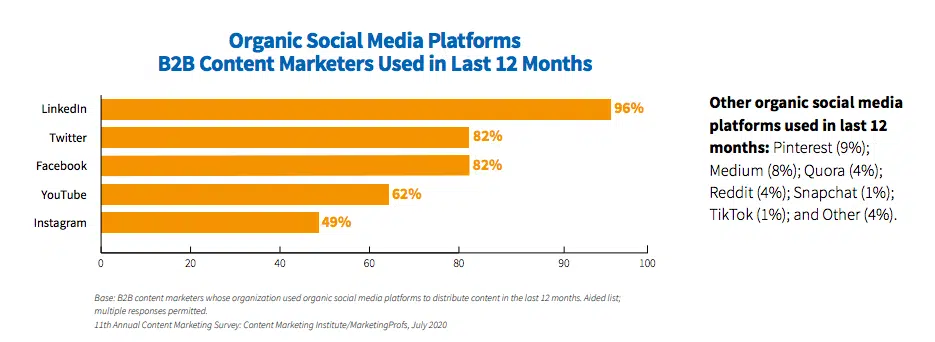
As for paid social posts, the image is quite a similar one, with LinkedIn coming at the top again, but other platforms switching up their places a bit:
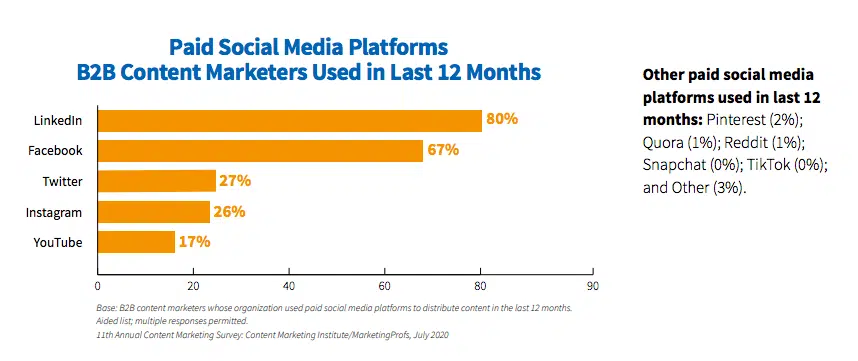
Now, that’s not to say you shouldn’t consider any other channels for finding where your customers are, depending on your niche. In fact, the channels that might work the best for you might be news, careers channels, or even a customer service account – consider all the possibilities!
Find New Content Angles
B2B marketing content is all about conversing and building relationships that lead to sales in the long term. Long-term is the key part here! Of course, people won’t stick around for too long if the content you are sharing with them bores them, and that’s where the tricky part comes in.
Although B2B has a reputation for notoriously boring content, don’t let it hold you down – think about how you can make your followers’ lives and work easier and more enjoyable and use this as the cornerstone for your content. Of course, sharing technical info or updates on features is all well and fine, and there’s no way to escape from it entirely, but think about content that might, to a degree, entertain your followers. It could be interesting how-to’s, industry news, trends, cool tips, strategy, and so on. To show the human side of your business (which is important as ever), you can always get your employees involved by telling their stories, highlighting their achievements, or resharing content created by them to your business page. Not only can this make your brand voice appear more human, but it also boosts your recruiting efforts.
Thought leadership also plays a very important role here, and LinkedIn itself has some interesting pointers on it and how to achieve it. Although, if you’re not interested in reading the whole thing, here’s the key info – 75% of potential buyers say that thought leadership helps them create vendor shortlists, with 49% saying that it has directly led them to do business with a company.
You should also keep in mind that it isn’t only CEOs and decision-makers your content is speaking to – it’s also the young people who are moving up the ranks and might be making decisions in a couple of years. And if you build a relationship with them in the early stages of their careers, they will likely choose you as your business partner later on.
Analyze Your Content
Now, this might sound pretty obvious, with 94% of the most successful marketers already analyzing their content. However, there’s also that 60% among the least successful who do not! Might it be the answer to their downfall?
See, forgetting to monitor things like engagement rate, conversions, impressions, and so on prevents you from telling how well your content is performing and how relevant your audience finds it. And although this sounds pretty basic, loads of businesses still forget to do it.
Another important thing is to set benchmarks and achievable goals for your content performance. And if your head is already spinning from terms like KPI and ROI, you can read more about the most important social media benchmarks in this article here.
So, clear messaging + realistic goals + benchmarks + analysis = good performance!
Now, once you’re done with planning, taking a look at some of the leading B2B brands with great social media accounts might be worthwhile. While there are plenty of great examples of the case, these are by far our favorites:
Adobe
Besides talking about features, awards, and accolades, Adobe also dedicates lots of their social media content highlighting the stories of their employees, interns, and clients to make their social media presence more personal and entertaining. Take a look, for instance, at one of their posts dedicated to the #WomenCreateWednesdays below.
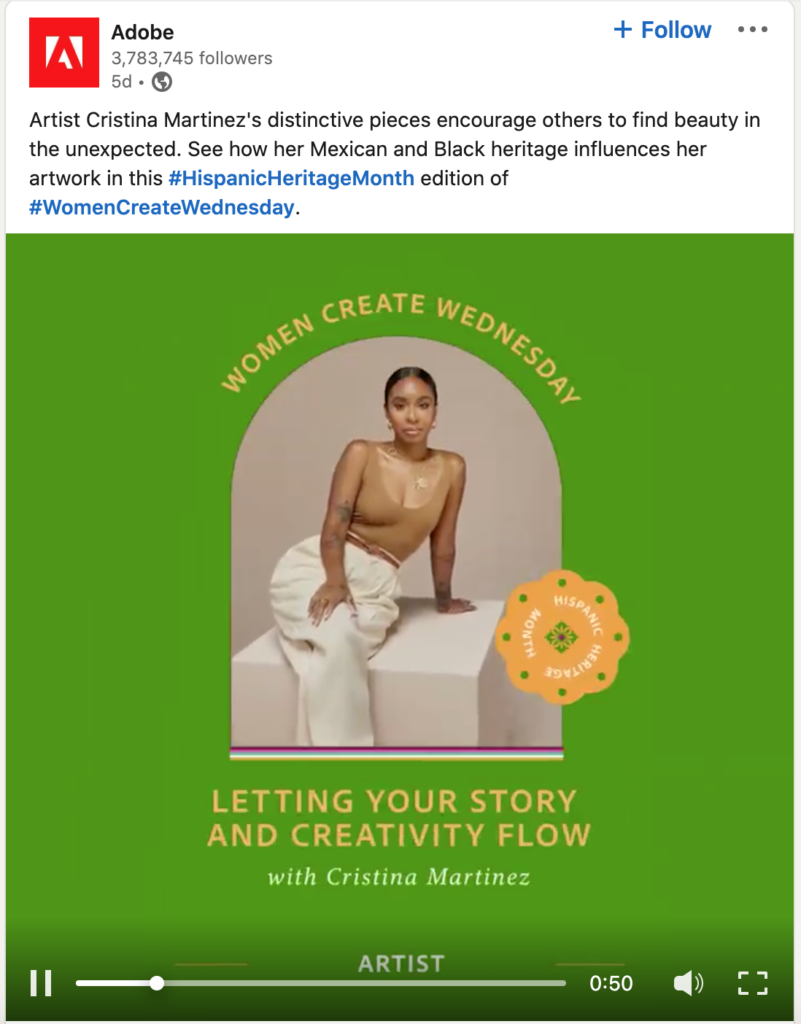
Slack
Although Slack’s social media content is oriented towards client success stories and product info, which is a classical B2B social media marketing choice, their casual tone (which is quite unusual in the business-to-business world) makes them stand out of the crowd. The most important part, though, is that their tone is consistent and works with the brand.

Gartner
Besides helpful and eye-catching infographics, Gartner is also proficient in using LinkedIn live video events to connect with its audience. They use an appropriate #GartnerLive hashtag to highlight events and interviews with industry experts. Such content pieces are both truly informative and entertaining to their audience.
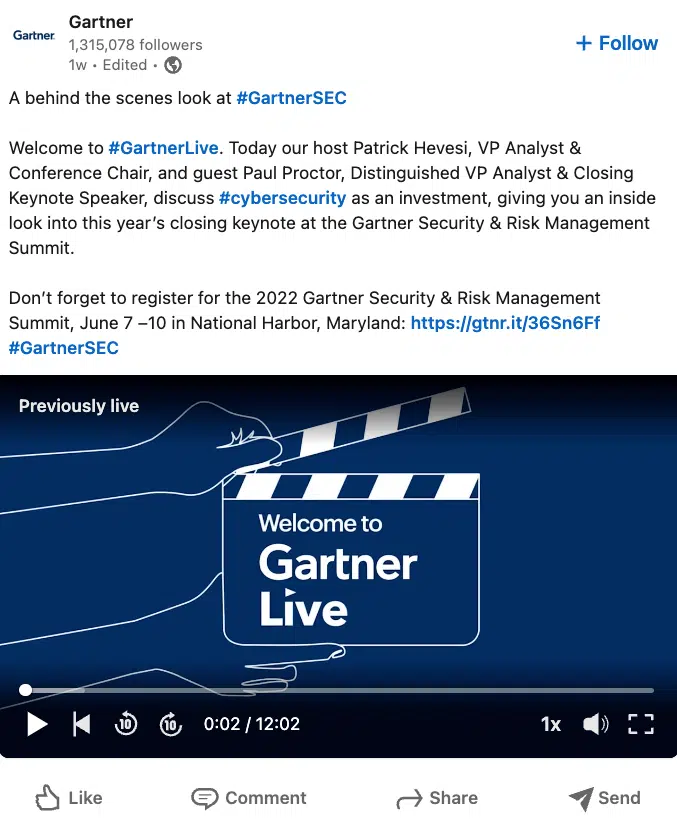
Yup, Twitter is also a B2B brand, and their account @TwitterMktg is pure joy and an example of how B2B content can be informative and fun at the same time. And you know, bringing the lighter side of things to your social media account feed might be just the thing to spark engagement. Take a look, for instance, at this oldie-but-goldie from Twitter’s Marketing account:
